Morley's workshop 381: Landaus, Holden protos and bugs
 Holden prototype
Holden prototype


|
|
Holden prototype
|
Morley gets stuck in to offering workshop advice, almost as much as his readers!
WRITE TO: uniquecars@primecreative.com.au
SUBJECT: Morley's Workshop
OR POST: Unique Cars mag, 379 Docklands Drive, Docklands, Victoria 3008
Morley's Soapbox
Last issue, this column looked at reports of an experimental Holden that was rumoured to be the new EJ sedan. The problem was that the prototype was gorilla-biscuit ugly and when the US bosses got wind of it, they stepped in and did a quick redesign as well as taking over responsibility for the next model, the EH.
A lot of my info for this came from UC contributor John Wright’s book, Heart of the Lion, in which he examined the history of Holden and some of the machinations that shaped the company we now know. Anyway, Wrighty, who has a forensic knowledge of this stuff, contacted me to assure me that the car in question was almost certainly a design dubbed the EF.
According to Wrighty, the car was to have been called the EF and Holden was working on it in 1961. The problem was that rather than stick with scaled-down copies of American designs, Holden went looking to Europe - and Opel- for inspiration and the slab-sided, Vauxhall Viva on steroids was the result. The project got as far as fibreglass models, but then was simply superseded by a new US-head-office-dictated design that would become the EJ.
When you look at the damn thing, you can see why Holden’s US masters took one look and binned the design. The question is, though, what would have happened had Holden committed to the thing and gone into full-scale production with it as the next Holden family car. Maybe we wouldn’t be talking about it – or Holden – at all in 2015.
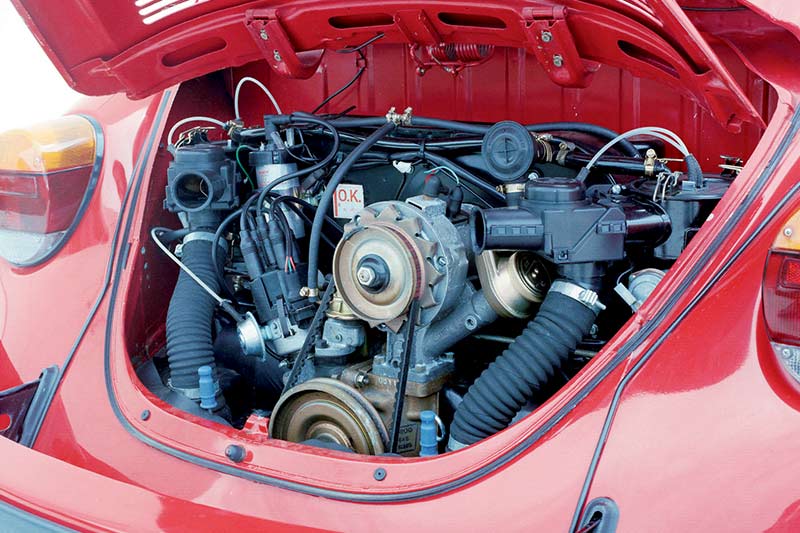
Tip of the month
Ever cross-threaded a spark plug? You’d remember if you had because it’s one heck of a big mess when it happens. The solution is to either remove the cylinder head and tap a new thread in the spark-plug hole, or take a punt, absolutely load the tap with grease and cross your fingers that the grease manages to grab all the swarf as you re-tap the thread. Either way, it’s a heck of a price to pay for a few milli-seconds of hamfistedness.
The way to avoid this horror is a trick taught to me way back when by a bloke who specialised in air-cooled Volkswagens. Because the heads are soft alloy and because the plugs on a Dak-Dak are tricky to get at and are hidden by lots of tinware, it’s relatively easy to cross-thread a plug during a routine service.
The solution, then, is to place a few centimetres of rubber fuel hose over the ceramic part of the spark plug and then wind the plug in holding the other end of the hose. The flexy hose effectively means you won’t be able to turn the plug unless it’s absolutely threaded correctly. Too much resistance due to a cross-threaded plug and the rubber hose will twist and buckle before the threads are damaged.
Just about every Volksy freak I know uses this trick, but there’s no reason it won’t work for any car with conventional, screw-in spark plugs.
LETTERS
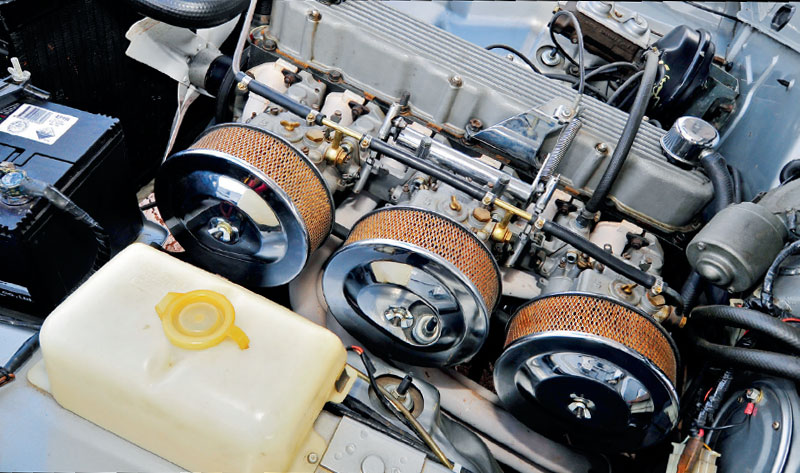
More carby pain
Reading "Triple Trauma" in this column recently reminded me of an experience that I had with my 265 (E38 specs) in a Chrysler by Chrysler auto that I have owned since 1984. Some years ago a Chrysler Australia experimental carby set-up came into my hands. It consisted of a beautifully forged downdraughttwin carby inlet manifold together with a pair of Carters with stylish, period-style flame arrester air-cleaners and accompanying linkages.
On fitting this arrangement to my car, there was no way I could get it to run properly, mirroring the experience you had with the Dell’Ortos. My local carby expert (Ricky Hunt) came up with the idea of replacing the Carters with twin Strombergs. The change was dramatic with a smooth idle and good power through the rev range. The set up certainly looks exotic eliciting appropriate oohs and aahs and means that I can retain air-conditioning and power steering, unlike cars fitted with triple Webers.
Brian Trevan,
Tasmania.
Hmm, multiple carburettor set-ups seem to be emerging as one of the greatest sources of automatic butt-ache ever devised. Your experience, Brian, doesn’t seem to be an isolated case given the mail I’ve received on the topic, not to mention my own time-wasting experience at the hands of a set of Dell’Ortos.
Chrysler used Carter carbs extensively back in the day, while Strombergs were often fitted in groups of three to Holden sixes, usually with pretty good results. I don’t know what Carters you were dealing with exactly, but the popular Strombergs were a bit like an SU carby in that they had an oil-filled damping system and worked as constant velocity carbs. The theory was that they wouldn’t contribute any more fuel to the mix than the engine could cope with, based on the vacuum being pulled at the throttle body. So, unlike Webers which just squirted in as much fuel as they could (which was often too much) these Strombergs were a bit more accurate and didn’t over-fuel to the same extent.
In a racing sense, the Weber’s heavy-handedness didn’t matter much, because the engine was usually howling away at high revs and could cope with all the fuel the carbs could deliver. But for a road car, the Stromberg set-up seems a more civilised alternative. I’ve seen a lot of red-motored Toranas using Strombergs rather than the trendy Webers and the owners reckon there’s no comparison for driveability, fuel economy and smoothness. What works on the track doesn’t necessarily work on the road, it seems. But you already knew that, right?
More Weber truths
Regarding the recent question in this column about the third carby in a Triple Weber set-up: I can’t give you part numbers but I can confirm the third carby on a Weber-equipped Hemi six is a different number to the front two. I believe the reason behind this was because the brake booster was plumbed into that rearmost manifold.
Steve Haskell,
Email.
Ah, nice work, Steve. As I was thinking about that question last month, I ruled out the third carb being different, because the reason suggested was that it would be running hotter than the front two carbs. Didn’t really sound like that’d be the case to me. But your theory that the brake booster was plumbed into the intake manifold of the third carb (as it most assuredly was on Hemi sixes) holds water for me.
I’d be interested to hear from anybody who knows exactly how the third carb on a Hemi six differed from the other two, but my suspicion would be that it was jetted a bit richer to make up for the lean-out when the brakes were applied and the vacuum booster started doing its thing.
I know for a fact that the booster can affect the engine’s mixture, because an old mate of mine had a bit to do with race teams over the years and once told me a story about a team running XU1 Toranas in touring car racing, with a hopeless finishing record thanks to engine blow-ups. The engines were carefully built for this team by a bloke who really knew what he was doing and then lovingly run-in on the dyno, fitted to the car and taken to the track. Where they would routinely dump their guts all over the track at about half-race distance.
So back to the workshop they’d go, build another engine, strap it to the dyno and run it at full revs and full loads for days on end without a problem. Then they’d bung it in the car, go to the track and blow it up all over again in the race. Clearly there was a difference between running on the dyno and running in the actual race car and, eventually, some bright spark at the workshop figured it out: The engine ran on the dyno with no ancillaries and, certainly, no vacuum hose for the brake booster. So it was fine like that. Once installed in the race-car, however, all those hoses were hooked up and the car suddenly ran lean on cylinder number six. Boom.
Speaking of weird causes for automotive problems, check out the next letter…
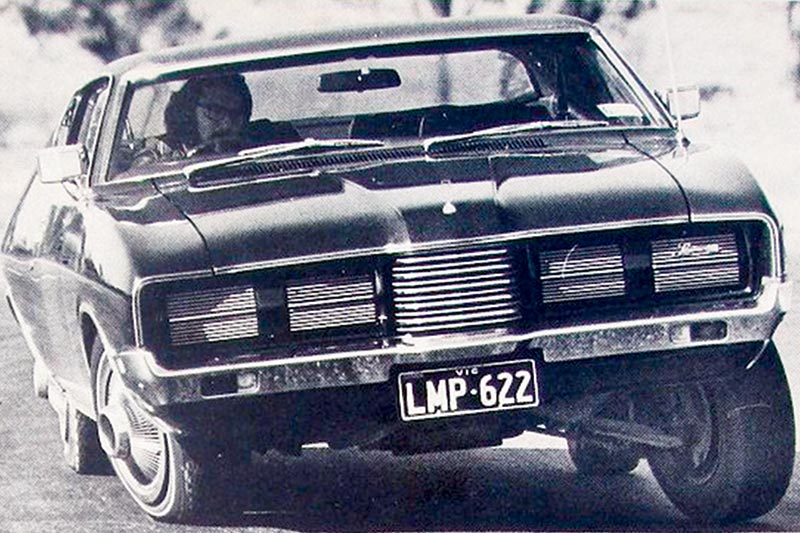
You wouldn’t read about it
Your discussions on vibrations in cars reminded me of a situation years ago that drove many an owner insane when they couldn’t fix it. Early Landaus and LTDs had full disc hub caps, which were conical and came with fins. And those old Fords would vibrate like crazy at speed.
These vibrations would occur even after every conceivable thing was changed, ground, assessed or re-made. Eventually, we realised the wheels were being balanced as if they were alloys, when the hub caps were off and were just plain steelies. When we put the hub caps back on, they were so bloody heavy they unbalanced the wheels again once they got up to speed.
Rob Newts,
Albany, WA.
Oh brother. How long did it take for that penny to drop? And how many LTD and Landau owners went quietly insane trying to figure it out?
I remember those hub-caps: They were horrible damn things that made the car look comical (and probably cost as much as a set of alloys in the first place). But I can easily imagine how nobody at Ford realised a hub-cap needed to be balanced as part of the rotating assembly that was the wheels and tyre package.
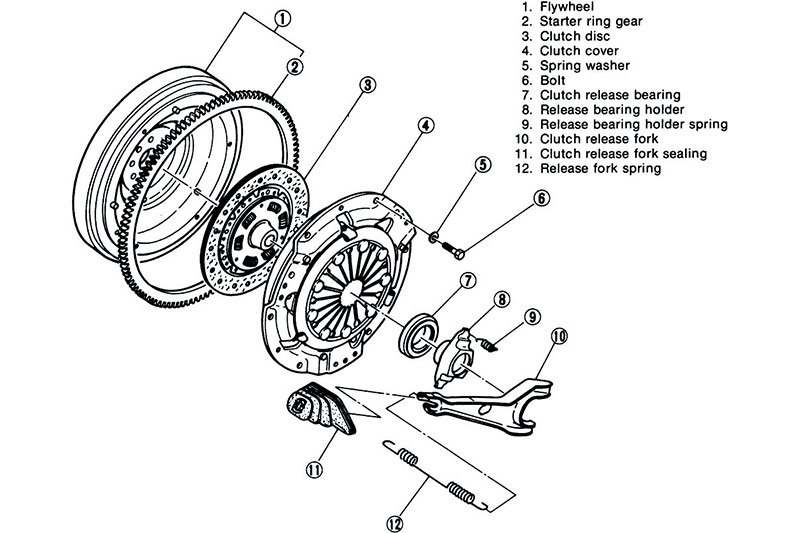 Actually, it’s a mistake I see of lot of blokes making when it comes to clutches and flywheels. Ironically, the right way to balance these components is individually but a lot of people think that because they work as a unit once they’re installed in the car, they should be balanced as a unit. What they’re forgetting is that the clutch plate doesn’t always stop at the same point on the friction plate each time the clutch is engaged. That’s the point of a clutch, right: It allows for a bit of slip to allow a car big heavy car to take off from rest without stalling.
Actually, it’s a mistake I see of lot of blokes making when it comes to clutches and flywheels. Ironically, the right way to balance these components is individually but a lot of people think that because they work as a unit once they’re installed in the car, they should be balanced as a unit. What they’re forgetting is that the clutch plate doesn’t always stop at the same point on the friction plate each time the clutch is engaged. That’s the point of a clutch, right: It allows for a bit of slip to allow a car big heavy car to take off from rest without stalling.
The bottom line is that you can balance the clutch and flywheel as a unit, but the first time you disengage the clutch to change gears, it could stop anywhere in 360 degrees relative to the flywheel. So you’ve wasted your time and money. But if you balance the clutch as a separate unit, it should stay in balance no matter where it stops when you let the clutch out.

Ex-pat heroes
Regarding Morley’s comment on Aussie cars overseas: They are a lot more numerous than one would think and surprisingly a lot of them are still on the road to this day. I have been fortunate to have travelled a lot in my 62 years on this planet and, as a bit of a car buff, can spot an old Aussie from quite a distance.
In the mid 1970s I spotted a HQ wagon that I believe was driven overland in the days when you could. I know this as we travelled by boat from Singapore to India and overland to London in an old Landy. Years later I also spotted a HR garaged up in South Wales.
I did a stint in East Africa, mainly Tanzania, and in the late ’90s saw an HR and an FE Holden on the road, the latter looking worse for wear and on its last legs. In the ’90s there were also a few XW through to XC Falcons floating around Kenya that I spied, probably brought up from South Africa. South Africa doesn’t rate a mention as there are numerous Holdens and Fords there. Most surprising for me was, while in Sudan, spotting an FE taking pride of place in the driveway of quite a humble house on the outskirts of Khartoum. I also recall an XY station-wagon in Mozambique in running order; probably another import from South Africa.
I now work and live in Thailand and almost every day spot an old Aussie either on the road or parked up. From an FJ in concourse condition, a HR still being used as a daily commute, to the best looking HG Monaro I have ever seen; black with beige interior. I also see several HQ Monaros including one done out like a Statesman in green with beige vinyl roof and there are HT, VK and VR Commodores, Geminis and a few Toranas in abundance.
Ford was also well represented here, and I’ve seen a tidy XY GT and XR through to XC Falcons on and off the road. My most unusual sighting was a VH charger with its front and rear windscreens knocked out to accommodate a long extension ladder driving down the Motorway on the way to Pattya. There is a really nice HQ 1ton ute getting around Pattaya with a sweet 253 burble.
I also once drove behind a really nice Holden Brougham in Borneo through a mountain pass, finally stopped the driver and had a chat. It was his father’s car originally and was now his with no plans to let it go. So if you keep your eyes open they are there.
Robert Bassett,
Email.
Top work, Robert. And there was me thinking my sighting of an old Torana in a Hmong village in northern Thailand was special. Sounds like your old-car radar is working just fine, too. The yarn about the Charger blows me away, too; imagine having a car like that and then poking out its glass so you can carry your ladder to work. Says something about the local work ethic, I suppose.
But it also reminds me of an E38 Charger that was, for some reason, or other, shipped to England many years ago. The rumour was that it had been factory fitted with an automatic transmission (the only one to be thus equipped). How it got to Blighty I have no idea, but given the Charger’s legendary reputation in New Zealand (Chargers are more highly prized than Phase 3s over the Tasman) maybe that’s where the ex-pat E38 came from originally. Last I heard, the story was that the auto Charger had turned up, still in England, but sitting on top of the heap at a local scrap-yard. Somebody please tell me that aint true.

More Asian ex-pats
While stationed at the RAAF base in Butterworth (near Penang in Malaysia) in the mid-’70s and ’80s I saw a number of Holdens. One was an LC/LJ Torana on the base, plus a couple of Kingswood sedans used for stock-car racing. I also drove a Kingswood station-wagon from Butterworth to Kuala Lumpur and back on a supply run.
On one of my trips to the island of Kho Samui I spotted an HR Holden sedan driven by the Thai tourist police. It had the largest rotating beacon I have seen. It was about the size of a mop bucket. Many Holdens were exported to Malaysia and Thailand. Many rusted out or were simply parked as they were road-taxed on the engine size.
Ray Low,
Forbes NSW
I guess it’s because military personnel are often posted overseas that they tend to take a global view of things. And if that happens to be the type of cars used on an air-force base, then fair enough. Certainly, the American love of sports cars was the result of servicemen in World War 2 being posted to Europe and becoming exposed to MGs and Jaguars and such. Once the war was over, those same servicemen started buying those same cars back home, giving the British motor industry a major shot in the arm with a huge proportion of the sporty convertibles made back then heading Stateside to feed demand.
But since Holden was officially exporting cars to Malaysia and other parts of Asia in the 1970s, it also seems logical for a group of Aussie military people to use an Aussie car. Even if it was for stock-car racing purposes. I bet seeing those old Kingswoods tearing around a makeshift track at the base made you just a little bit homesick, Ray.

That sleeper that nearly was
Jaguar did install the 4.5L V8 engine from the Majestic Major into a Mark X body. It was slated for production but William Lyons cancelled it on the grounds that this car would take sales away from the 3.8L Mark X. This is why the 4.2L straight six was developed and this engine was first installed in the 420G.
Richard Fulwood
email.
Thanks for the update, Richard. I gather the V8 Mark X you mention never got beyond the prototype stage before management shut it down to avoid robbing Peter to pay Paul in the showroom. To be perfectly honest, though, I reckon a V8 Mark X is a car that didn’t really need to exist, did it?
I mean, that DOHC six that Jaguar stuck with was probably a better engine than the V8 anyway.
I guess there must be hundreds of examples of this sort of thing throughout the history of the motor industry: Cars that were built to either test the waters or to test components and were then scrapped before anybody outside the company got their hands on them. I’ve heard all about LJ Toranas with V8s in them, all of which were scrapped or crushed as the supercar scare grabbed the headlines back in the early 70s (scuppering Holden’s plans for a V8-powered XU1 in the process). And there must be many, many more examples of manufacturers doing the development work and then getting cold feet at the last minute.
Sometimes, a handful of early or pilot-build vehicles make it on to the market, even though the project has been officially scrapped. In Australia, the classic example of that must be Leyland’s Force 7 coupe, 10 pre-production examples of which made it out the factory gates before Leyland called time on its Australian manufacturing plant. The difference being, I guess, that the Force 7 wasn’t panned in isolation; it went west with the whole Leyland Australia operation. But how close was it to being officially released? Well, the owners’ handbooks were printed…
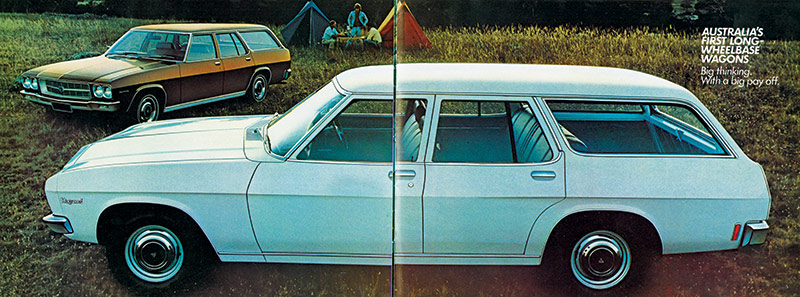
Special Q
I have just recently become the owner of a rather unique, special order 350 cubic-inch HQ Premier station-wagon; one of six I’m led to believe. The car has been in storage for a number of years and is in need of a full restoration – not a lot of rust and only minor panel damage. This HQ was a special order through Southern Motors and was built at Dandenong. The car still maintains its original Sebring Orange paint, 350 motor and TH 400 transmission.
I’ve read on a couple of internet forums this car was used as a tow vehicle for Bob Jane’s HQ Monaro featured in Unique Cars recently. I am seeking any information on how the car was presented when in this role, type of wheels etc. and if you could steer me in the right direction to get any photos and background info. I believe it ended up as a RACV/NRMA road service vehicle.
Hoping you can help me out, I’m keen to restore this beast back to its former glory and get in the queue to have it featured in your superb mag.
Peter Stephens,
Email.
Sure does sound like a special-order car, Pete. Generally speaking, the 350 was an option on the HQ GTS Monaro and the Statesman, but it’s very rare to see on in Premier, and a station-wagon at that. Then again – as I’m constantly reminded – if you were prepared to wait and form a good relationship with a dealer back then, you could pretty much order up any combo your heart desired.
A bright orange HQ wagon toting a 350 small-block and a TH400 tranny sounds like a mighty good tow-vehicle to me, and it wouldn’t surprise me at all if that very car was the one Bob Jane used to tow his race-cars around with.
The only catch with that theory is that I’ve seen photos of Bob’s race outfit back in the days before he raced the HQ and even as far back as the Mk 2 Jag days, he was using a truck with what looks like an early version of a banana-back trailer to do the hauling. It’s hard to imagine he’d then revert to a station-wagon and trailer later on. But, like I said, who knows and it could be that the Premier was used as some kind of promotional or team personnel transport.
The chances of it ending up as an RACV or NRMA service vehicle seem a bit slim, but only because these most conservative of organisations tend to use garden-variety vehicles for their own purposes. But some RACV and NRMA agencies out in the bush consist of the local garage or workshop operator with a contract to provide the breakdown service on the club’s behalf. And I’m tipping one of these characters would have jumped at the chance to cruise around in a 350 HQ jump-starting flat batteries, changing tyres and breaking into cars with the keys locked inside. So, again, who knows?
Do you have any photos of the car? I’m tipping UC readers would be very keen to take a peek. And maybe it’ll even jog a few memories from those who knew it back in the day.
WRITE TO: uniquecars@primecreative.com.au
SUBJECT: Morley's Workshop
OR POST: Unique Cars mag, 379 Docklands Drive, Docklands, Victoria 3008
Unique Cars magazine Value Guides
Sell your car for free right here
Get your monthly fix of news, reviews and stories on the greatest cars and minds in the automotive world.
Subscribe

.jpg)







.jpg)

